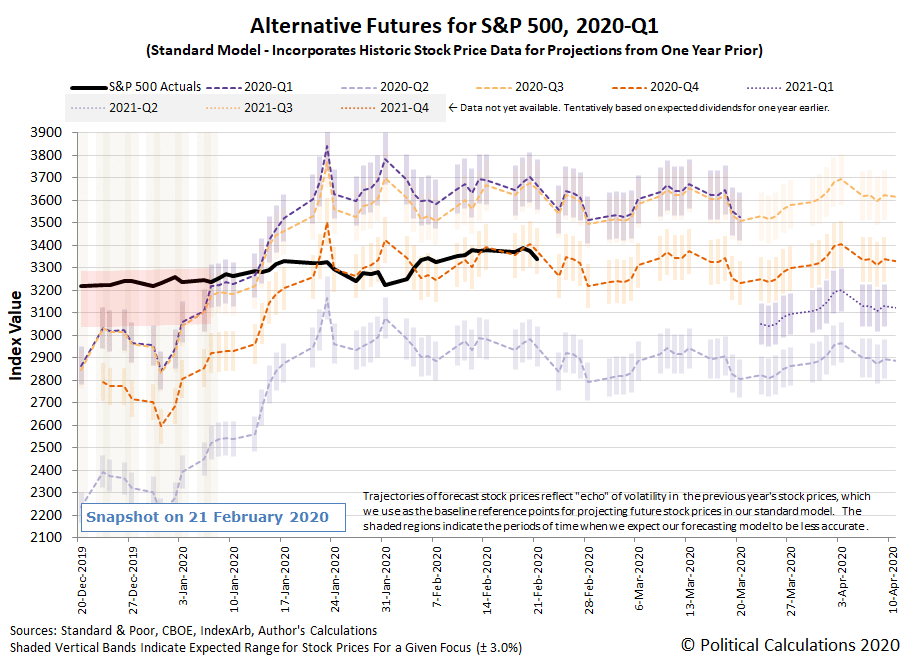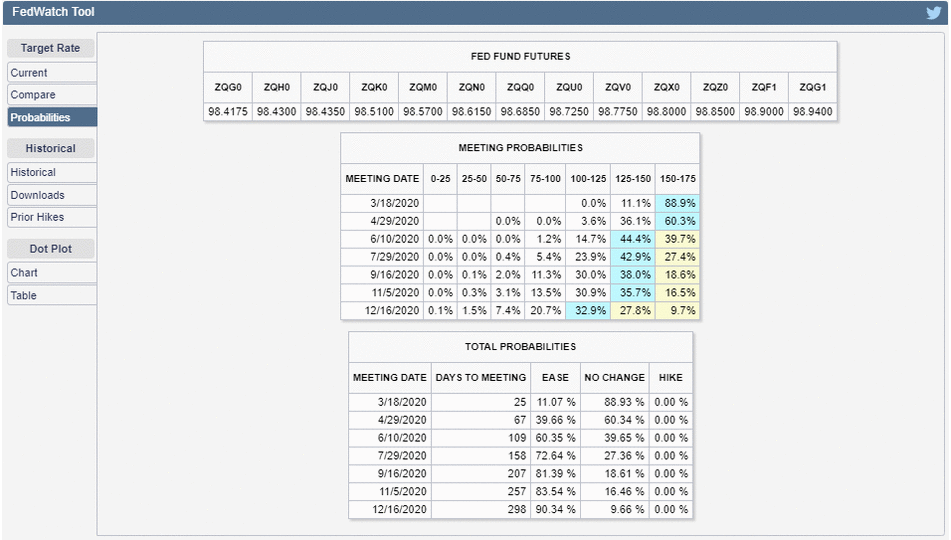Volatility Rears Up For The S&P 500
Statistically speaking, the S&P 500 (Index: SPX) got pretty interesting yesterday, where we define "interesting" as any change in the level of the S&P 500 of 2% or more.
In falling 3.35%, the decline in the S&P 500 on Monday, 24 February 2020 falls into pretty rarefied territory, where in the 70 years since 3 January 1950, covering some 17,649 trading days for which we have data, the S&P 500 has only recorded drops 2.85% or more on just 133 days.
That's not as rare as you might think, because on average, the market has seen drops like that on average every 132-133 days. Except, when volatility in the market cranks up to levels like that, big changes in the level of the S&P 500 are not evenly distributed over time, but instead tend to be clustered close to each other when they occur. The following chart shows all the daily percentage changes in the S&P 500 and its predecessor indices from 3 January 1950 through 24 February 2020, where the biggest changes fall outside the red-dashed lines, which represent daily percentage changes that are more than three standard deviations away from the mean trend for the index.
(Click on image to enlarge)

Looking at the level of the S&P 500 itself, the change that took place on 24 February 2020 wasn't all that surprising. To help make that point, we've animated the following chart showing the forecast from the dividend futures-based model we use to project the future trajectory of the S&P 500 that we presented long before the market opened on Monday to what it looks one trading day later.
(Click on image to enlarge)

The heavy black line representing the actual trajectory of the S&P 500 is closely paralleling the orange-dashed line representing the trajectory the dividend futures-based model indicates would apply if investors are closely focusing on 2020-Q4 in setting current day stock prices. You'll also note a big change in the future forecast about 30 days from now, which is an echo of the volatility event that just took place. This echo is an artifact of our use of historic stock prices in projecting future stock prices, where the important thing to know right now is that it will be in flux until things settle down.
As for what to pay attention to in the days ahead, the big question now is not whether the Federal Reserve will be cutting short term interest rates in the U.S. in 2020, but how many times it will in 2020. At the end of the last week, investors were betting on two rate cuts, but as investors respond to growing indications of massive supply chain disruptions resulting from China's coronavirus epidemic, the odds are increasing there will be a third. We've animated the probabilities recorded by the CME Group's FedWatch tool for what the Fed will do with the Federal Funds Rate at upcoming meetings of its Federal Open Market Committee to show how it has changed from what we presented yesterday:
(Click on image to enlarge)

To summarize what the FedWatch tool is indicating, investors are by betting the Fed will be forced to implement quarter point rate cuts in both 2020-Q2 and 2020-Q3, and the odds of a third rate cut in 2020-Q4 have risen.
That uncertainty for 2020-Q4 accounts for why the alternative futures spaghetti forecast chart is indicating investors are remaining mostly focused on 2020-Q4 at this time. However, if more bad news erupts to cause investors to shift their forward-looking focus earlier in the year, particularly to 2020-Q2, such a change in focus would likely be accompanied by a much larger drop in stock prices.
And that's without any changes in investor expectations for future dividends. If those fundamental expectations change, say with companies acting to cut dividends to preserve their cash flows because they anticipate sharply lower revenues and earnings from experiencing supply chain disruptions, then the market could be in for a really rocky ride.
We told you the S&P 500 was getting pretty interesting. The next several days should see quite a lot of action, particularly from central banks looking to head off as much trouble as they can, which will have an effect on stock prices. How much remains to be seen.
Disclaimer: Materials that are published by Political Calculations can provide visitors with free information and insights regarding the incentives created by the laws and policies described. ...
more


